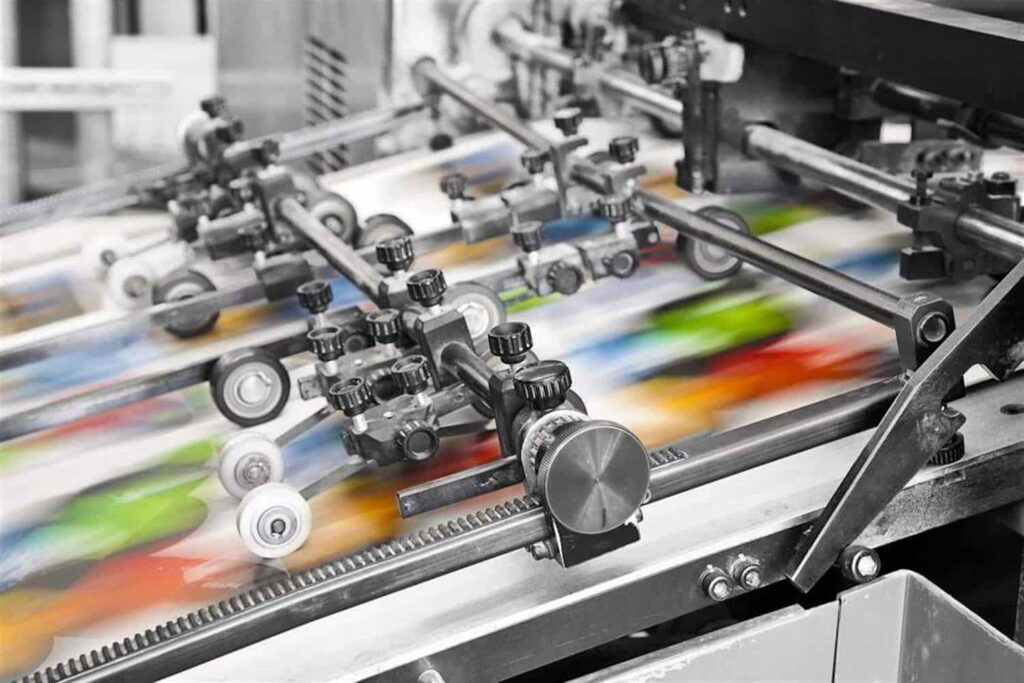Sustainability and environmental concerns stand as pivotal topics influencing strategic business and product development decisions. Environmental sustainability is defined by conditions in which human activities, at both planetary and regional levels, do not disrupt natural cycles beyond the capacity of planetary resilience. Sustainable development encompasses the management of energy and material flows, the integration of clean technology, closed-loop systems, and considerations of quality, economics, and social aspects.
The printing industry significantly contributes to environmental impacts, characterized by energy consumption and environmental pollution resulting from chemical-intensive processes. Recent research has extensively addressed sustainability challenges within the printing sector. Each printing technique employs various chemicals, contingent upon the specific operations involved.
Offset printing, recognized as a chemical-intensive technique, generates diverse types of waste (Euroth & Johansson, 2006).

Key environmental concerns associated with offset printing include the use of non-renewable resources (mineral pigments in paper, mineral oil-based inks and solvents, metal plates, and plastic in equipment), the utilization of toxic or harmful substances (additives in inks and adhesives, biocides in fountain solutions), emissions of volatile organic compounds (VOCs) from various sources (inks mixing, drying, fountain solution, cleaning solutions, and blanket washes), generation of toxic waste (ink and cleaning solvent waste), production of regenerative waste (paper and unacceptable prints), energy consumption (in production equipment, ink drying, and transport), and emissions from transportation (paper supply chain, ink, varnish, delivery of printed matter, and waste transport) (Mirkovic et. al, 2011).
The printing process poses environmental challenges due to its energy and material resource usage. A life cycle assessment revealed that sheet-fed offset printing is the primary contributor to the environmental impact of printed materials, with 52% attributed to printing, 31% to paper, and 17% to ink. This process significantly contributes to acute ecotoxicity. Emissions involve fugitive volatile organic compounds (VOCs), with a consumption of 3 kg/tone product. There is potential to substitute VOC-containing chemicals with alternatives having lower environmental and health impacts. The adoption of UV inks, dried with LED-UV lighting, not only reduces electricity consumption but also contributes to VOC reduction. Paper remains the dominant resource at 48%, with concerns about the impact of forestry on biodiversity, energy consumption in papermaking, and emissions from chemical pulping, deinking, and bleaching. Amid current environmental concerns, attention is turning towards the development of non-wood fibers, like algae, as raw materials for papermaking. Strategies such as alternative fibers, recycling, reforestation programs, and plantation management are being explored to achieve a sustainable fiber supply (Mirković et. al, 2019).
In response to the pressing environmental challenges posed by the printing industry, there is a growing momentum towards adopting sustainable practices and exploring innovative solutions. Companies are increasingly recognizing the need to minimize their ecological footprint and are investing in research and development to enhance the environmental performance of printing processes. This includes the development of eco-friendly inks, the implementation of energy-efficient technologies, and the exploration of alternative materials for printing substrates. Furthermore, industry stakeholders are actively engaging in collaborative efforts to establish industry-wide sustainability standards and certifications. As consumer awareness of environmental issues continues to rise, there is a growing market demand for eco-conscious printing services, prompting businesses to align their practices with principles of sustainability. Through a concerted effort across the printing supply chain, the industry aims to strike a balance between meeting consumer demands and minimizing its impact on the environment.
Sources:
- Euroth, M. & Johansson, M. (2006). Environmental data on gravure and offset printing. Acta Graphica, 18(4) 1-10.
- Bolanča Mirković, I., Majnarić, I., Mustač, S., & Bolanča, Z. (2011). Printing and environmental sustainability. 38th International Research Conference of IARIGAI – Advances in Printing and Media Technology. Enlund, N., Lovreček, M. (eds.) Darmstadt, 361-368. https://www.bib.irb.hr/ 573521
- Bolanča Mirković, I., Medek, G. i Bolanča, Z. (2019). Ecologically Sustainable Printing: Aspects of Printing Materials. Tehnički vjesnik, 26 (3), 662-667. https://doi.org/10.17559/TV-20180620181128